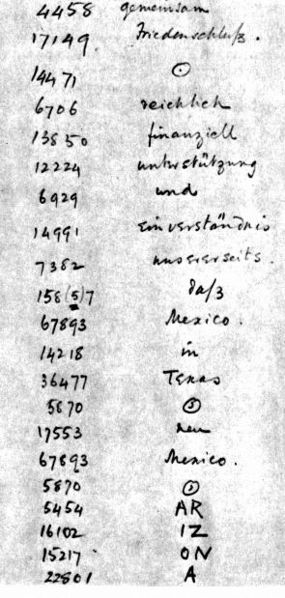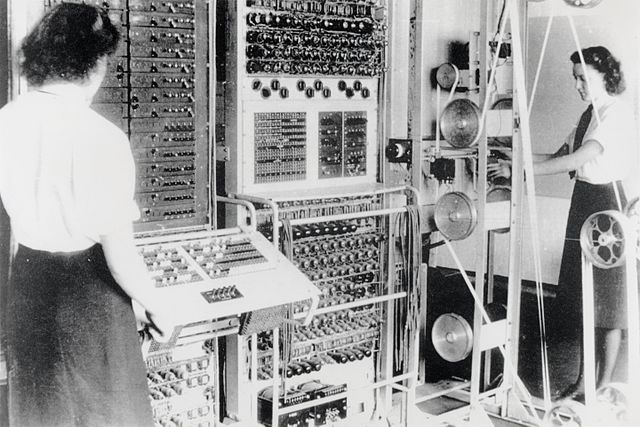Signals intelligence (SIGINT) is the act and field of intelligence-gathering by interception of signals, whether communications between people or from electronic signals not directly used in communication. Signals intelligence is a subset of intelligence collection management. As classified and sensitive information is usually encrypted, signals intelligence may necessarily involve cryptanalysis. Traffic analysis—the study of who is signaling to whom and in what quantity—is also used to integrate information, and it may complement cryptanalysis.
RAF Menwith Hill, a large site in the United Kingdom, part of ECHELON and the UKUSA Agreement in 2005
A German message intercepted by the British during World War II, signaling Germany's unconditional surrender
Zimmermann Telegram, as decoded by Room 40 in 1917
A Mark 2 Colossus computer. The ten Colossi were the world's first programmable electronic computers, and were built to break the German codes.
The "Y" service was a network of British signals intelligence collection sites, the Y-stations. The service was established during the First World War and used again during the Second World War. The sites were operated by a range of agencies including the Army, Navy and RAF, and the Foreign Office. The General Post Office and the Marconi Company provided some receiving stations, ashore and afloat. There were more than 600 receiving sets in use at Y-stations during the Second World War.
Arkley View, 1943





